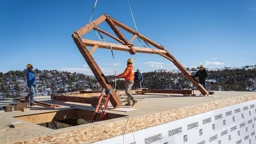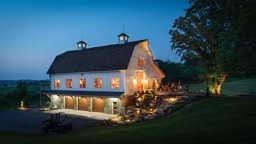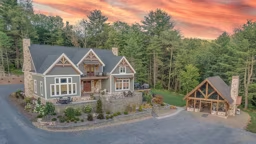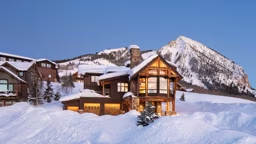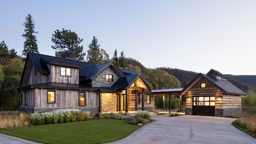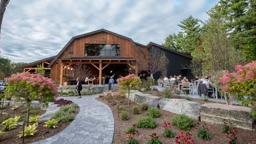
It’s a common feeling often revealed when conversing about the aspiration of building a custom home — that desire to create a one-of-a-kind retreat for family and friends to gather and make memories. And for this lakeside project, the sentiment was no different.
“The owner actually grew up visiting that same spot, right on the Lake of Bays,” says Canadian Timberframes owner, Jeff Bowes. “When you look across the water, you can literally see his grandparents’ original cottage where he spent his summers as a kid. As he got older, he knew he wanted to create that same kind of experience — and those same memories — for his family.”
Drafting the Dream
A long-time lover of timber-frame construction, the owner’s first step toward making his dream home a reality was to reach out to Jeff Bowes at Canadian Timberframes after a past project on the company’s website caught his eye. “He found our Elk River home that was built in Fernie, British Columbia, in a ski resort area,” says Jeff. “It’s close to the same design but flipped, garage end to garage end, to capture the views.”See also Traditional Design in a Canadian Timber Home

Making the home a mirror image of its original layout was the first step toward customizing the plan to suit the owner’s needs. “He liked the idea of two upper-level master suites kept private by a middle catwalk, similar to the Elk River,” Jeff explains. “Keeping the upstairs rooms separate so you’re not dealing with people walking down the hall past your bedroom door was important.”
That focus on comfort and privacy carried into the home’s six other bedrooms, including two more on the top level (located over the three-car garage) and two adjacent to the main living area (kept separate by a small hallway). Two more small bedrooms are tucked away in the lower recreational level, which also features a billiard area, golf simulator (“We had to drop the floor in that area to accommodate the swing height,” says Jeff) and three-sided bar with a sink and fridge. An outdoor storage space was also included in this area to keep some of the summer and winter equipment out of sight.
Given the location of property, outdoor living was equally important and added even more living space to the 6,900-square-foot home. “While his grandparents’ cottage was really a summer retreat, this needed to be a real four-season getaway,” says Jeff.

To achieve this, Jeff and his team incorporated a two-level covered deck with plenty of space for both the children and adults. They also created a spacious screened-in porch — a design characteristic that’s typical to the area, says Stephanie Bowes, Jeff’s wife and executive director at Canadian Timberframes. “Spring and early summer bring lots of bugs to the area, so having a screened-in porch just increases your living and entertaining space,” she adds.
See also Canadian Timber Home Overlooking Lake Rosseau

House of Style
In addition to the layout, Jeff and his team had to address the look and style of the home during the important design phase, creating renderings and samples for the owner to review before settling on a modern-meets-rustic look throughout. “After looking at samples and figuring out what he liked and didn’t like, we ultimately went with a hybrid mix, featuring structural timbers in the special areas and clean, stick-built construction in the bedrooms,” Jeff explains.
Other material decisions included vaulted tongue-and-groove ceilings, dark-stained timbers (found on both the interior and exterior of the home) and lots of structural steel plates and cables, an element that allowed for larger expanses and more flexibility with the timbers.
With the design for the home complete, the Canadian Timberframes team got ready for construction — all with the initial dream in the back of their minds. “In this area of the country, people will leave Toronto on a Friday evening and drive to their cottage to spend their weekend with family and friends,” says Stephanie. “Although a bit more expansive than what some might consider a ‘cottage,’ that feeling of a gathering place is still the same and, in this case, that feeling had a big impact on the design.”
See also A French Country-Style Timber-Frame Cottage




